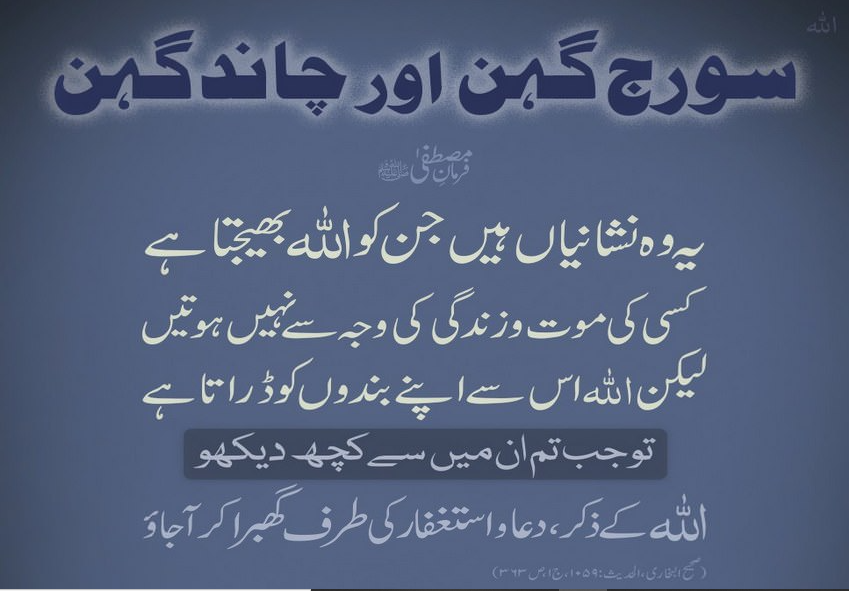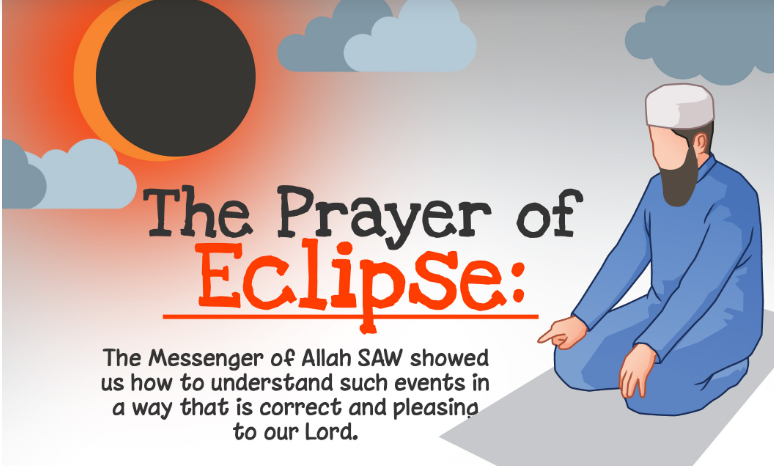The Request of Shroud
The justification behind the obscuration is to caution individuals, to impart in them an earnestness to get once again to the submission of Allah Subhanahu-wa-Taala.
The Courier of Allah SAW said, "These signs that Allah sends are not for the demise or life of anybody, but rather Allah makes His slaves apprehensive through them, so on the off chance that you see anything of that [eclipses], hurry to recollect Allah and make request to Him and look for His forgiveness."1
After the sun had overshadowed, the Prophet SAW came to the masjid looking frightened and surprised as though the Hour was being laid out. He SAW was scared by this enormous indication of Allah's power, so it's the ideal opportunity for us to introspect upon our undertakings and race to look for pardoning.
Make Your Niyyah
Ibn Taymiyyah referenced in his Majmû' that an individual ought to make the niyyah to make the Kusûf petition whenever he has been educated by somebody who is learned in that field, and that the groundwork for it very well may be viewed as a urging of the self to great deeds, from the part of rushing oneself to the dutifulness of Allah by following the superb sunnah of the Prophet SAW.2
Step by step instructions to Play out the Request of Obscuration
1- There is no adhan or iqamah to be called. It is implored in gathering despite the fact that it is as yet reasonable to exclusively supplicate it.
2- The request is of two units, in each raka'ah are two ruku'.
3- The Imam makes the typical Takbîrat ul-Ihrâm.
4- The recitation in the first raka'ah is long, as A'isha portrayed, that it was roughly the length of Surah al-Baqarah.3
5- The Imam makes the takbir and afterward goes in to ruku' for quite a while, making tasbeeh and tahmeed, and so on.
6- The Imam then, at that point, raises his head and says, "Sami'a Allâhu liman Hamidahu" and afterward "Rabbanâ wa lakal Hamd", and afterward stays standing. He doesn't go into sujud.
7- The subsequent standing currently begins with a recitation not as long as in the first raka'ah, the length of roughly Surah Al 'Imran.
8- The Imam makes a second ruku' albeit not as long as the first, then raises his head and fixes, and afterward goes into the sajdah as in the typical supplications.
9- The two sajdahs are stretched and afterward the Imam stands once more. This is currently one raka'ah complete.
10- The entire cycle is rehashed once again, with every span more limited long of time than the absolute first standing.
11- Whenever you have gotten done, you will have supplicated a two unit petition with four ruku' for example bowings and four sajdahs for example surrenders
Is It Asked Out loud Or Quietly?
As indicated by the most grounded insightful assessment, it is to be discussed so anyone might hear as 'A'isha FEMALE Radi Allahu Anha portrayed that the Prophet SAW recounted the Salat al-Kusuf aloud.4
Where It Is Asked
It is from the Sunnah to ask the Salat al-Kusuf in the Masjid, in gathering as demonstrated by Imam al-Bukhari. The ladies are additionally permitted to go to the request in the masjid as described in the two saheehs.
The Khutbah after the Request
It is sunnah for the Imam to give a Khutbah in two sections after the request, a sign of the event of such an emotional and realistic occasion as the overshadowing. One ought to urge individuals to great, prompt them in their strict undertakings and order them to make tawbah and furthermore explicitly to look for shelter with Allah Subhanahu-wa-Taala from the discipline of the grave as demonstrated by Imam al-Bukhari in his Sahih.5
One should attempt to help oneself from such an occasion, and not treat it as some extraordinary fun occasion as we see a considerable lot of the doubters doing at such critical points in time.








0 Comments